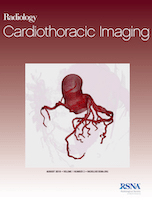
Radiology-Cardiothoracic Imaging
Scope & Guideline
Unveiling New Perspectives in Radiology
Introduction
Aims and Scopes
- Multimodality Imaging Techniques:
The journal showcases research employing various imaging modalities, including CT, MRI, and PET, to provide comprehensive insights into cardiothoracic conditions. This includes detailed studies on the efficacy of specific imaging techniques in diagnosing and managing diseases. - Cardiovascular Disease Assessment:
A core focus is the assessment and characterization of cardiovascular diseases, such as coronary artery disease, heart failure, and congenital heart conditions. Research often investigates imaging biomarkers that can predict disease progression and patient outcomes. - Innovative Imaging Technologies:
The journal highlights advancements in imaging technologies, such as photon-counting CT and artificial intelligence applications in imaging. These innovations aim to improve image quality, reduce radiation exposure, and enhance diagnostic accuracy. - Clinical Applications and Outcomes:
Research often explores the clinical implications of imaging findings, linking imaging characteristics with patient outcomes and treatment decisions, particularly in complex cases like congenital heart disease and cardiomyopathies. - Radiomics and Machine Learning:
There is a growing emphasis on the use of radiomics and machine learning techniques to extract quantitative features from imaging data, facilitating more precise risk stratification and personalized treatment strategies.
Trending and Emerging
- Artificial Intelligence and Machine Learning:
There is a notable increase in studies incorporating AI and machine learning to enhance imaging analysis and interpretation, aiming to improve diagnostic accuracy and streamline workflows. - Cardiac MRI Innovations:
The use of advanced cardiac MRI techniques, such as T1 mapping and 4D flow imaging, is gaining prominence, allowing for more detailed evaluations of myocardial function and structure. - Environmental and Health Impacts of Imaging:
Recent publications are beginning to address the implications of climate change and environmental sustainability in the context of cardiovascular imaging, reflecting a growing awareness of the broader impacts of healthcare practices. - Integration of Imaging with Clinical Pathways:
There is an emerging trend towards integrating imaging findings with clinical decision-making processes, enhancing the role of imaging in personalized medicine and targeted therapies. - Focus on Rare and Complex Conditions:
Increasing attention is being paid to rare and complex cardiothoracic conditions, with detailed case studies and multimodality imaging approaches to better understand these challenging disorders.
Declining or Waning
- Traditional Imaging Modalities:
There appears to be a decreasing emphasis on conventional imaging techniques like standard echocardiography or basic chest X-rays, as more advanced modalities gain traction in clinical practice. - Generalized Reviews without Novel Insights:
The journal has seen a decline in the publication of broad review articles that do not contribute new insights or perspectives, indicating a shift towards more original research and innovative studies. - Single-Center Studies:
Research focusing solely on single-center experiences or outcomes is becoming less frequent, as multicenter collaborations and larger cohort studies are favored for their broader applicability and generalizability.
Similar Journals
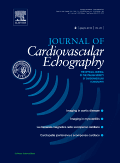
Journal of Cardiovascular Echography
Connecting global minds in cardiovascular science.Journal of Cardiovascular Echography, published by WOLTERS KLUWER MEDKNOW PUBLICATIONS, serves as a premier platform for global researchers, medical professionals, and students dedicated to the ever-evolving fields of cardiology and cardiovascular imaging. With the ISSN 2211-4122 and E-ISSN 2347-193X, this journal provides access to cutting-edge research from 2011 to 2024, offering insights into the latest advancements in echocardiographic techniques and their clinical applications. Despite its current classification in the Q3 quartile within both Cardiology and Cardiovascular Medicine as well as Radiology, Nuclear Medicine, and Imaging, it continues to make meaningful contributions to the academic community, ranking 234th in the Scopus category for Radiology and 278th in Cardiology. The Journal of Cardiovascular Echography is committed to furthering knowledge and fostering collaboration among researchers by sharing critical developments in the field, making it an essential resource for anyone looking to stay abreast of transformational changes in cardiovascular diagnostics.
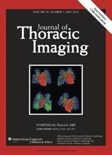
JOURNAL OF THORACIC IMAGING
Transforming Thoracic Medicine through Research ExcellenceThe JOURNAL OF THORACIC IMAGING, published by Lippincott Williams & Wilkins, stands as a pivotal resource in the fields of Pulmonary and Respiratory Medicine as well as Radiology, Nuclear Medicine, and Imaging. With the ISSN 0883-5993 and E-ISSN 1536-0237, this esteemed journal has been providing critical insights and advancements since its inception in 1985, contributing significantly to the ongoing dialogue and research within these disciplines. The journal maintains a commendable position, ranking in the Q2 category in both relevant fields and achieving an impressive Scopus ranking of #46 out of 333 in Radiology and #30 out of 155 in Pulmonary Medicine, showcasing its influence and impact (with particles in the 86th and 80th percentiles, respectively). While the journal is not open access, it continues to disseminate high-quality research that informs clinical best practices and emerging technologies in thoracic imaging. As a leading publication, it serves as an essential tool for researchers, clinicians, and students seeking to stay at the forefront of thoracic health innovations.

JACC-Cardiovascular Imaging
Empowering Clinicians with Cutting-Edge KnowledgeJACC-Cardiovascular Imaging, published by Elsevier Science Inc, is a premier journal that focuses on the rapidly evolving field of cardiovascular imaging, providing a vital platform for the dissemination of high-quality research and clinical studies. With an impressive impact factor and ranking within the top tier of cardiology and radiology specialties, the journal is recognized for its commitment to advancing knowledge in diagnostic imaging techniques, including echocardiography, MRI, and CT in cardiovascular contexts. Since its inception in 2008 and converging through 2024, JACC-Cardiovascular Imaging has maintained a distinguished position, currently ranking Q1 both in Cardiology and Cardiovascular Medicine as well as in Radiology, Nuclear Medicine and Imaging. This ensures its relevance and influence, as evidenced by its Scopus rankings—ranked #2 in Radiology and #8 in Cardiology, placing it in the top echelons of scholarly output. Although it does not offer open access, the journal's content is crucial for researchers, clinicians, and students who seek to remain at the forefront of cardiovascular imaging advancements.
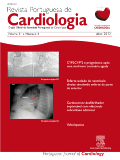
Revista Portuguesa de Cardiologia
Exploring innovative solutions in cardiology since 1970.Revista Portuguesa de Cardiologia, published by Elsevier España SLU, stands as a pivotal resource in the realm of Cardiology and Cardiovascular Medicine. With its origins tracing back to 1970, this journal has cultivated a robust academic presence, achieving a 2023 Q3 ranking in its category, and currently holding a position of #220 out of 387 on the Scopus rankings, placing it within the 43rd percentile of its field. This open access journal, available since 2011, aims to disseminate high-quality research and insights relevant to contemporary cardiovascular issues. Its commitment to accessibility and knowledge exchange enhances its importance for clinicians, researchers, and students alike, fostering a more informed community in the fight against cardiovascular diseases. Operating from its base in Barcelona, Spain, the journal welcomes contributions that further the understanding and treatment of heart conditions, contributing significantly to the advancement of cardiovascular health.

Journal of Echocardiography
Advancing the Frontiers of Cardiac ImagingThe Journal of Echocardiography, published by SPRINGER JAPAN KK, is a leading periodical dedicated to advancing the field of echocardiography and cardiac imaging. With an ISSN of 1349-0222 and an E-ISSN of 1880-344X, this journal serves as a vital resource for researchers, clinicians, and students alike, providing a platform for the dissemination of innovative research, case studies, and reviews focused on the latest echocardiographic techniques and applications. Operating under a prestigious publisher with a noteworthy reputation in the academic community, the journal features contributions that significantly impact the current understanding of cardiac health, making it essential reading for those in the fields of medicine, radiology, and imaging. As recognized in the 2023 Category Quartiles, it holds a solid Q3 ranking within the Radiology, Nuclear Medicine and Imaging category, further highlighting its relevance within the field, where it ranks #170 out of 333 according to Scopus. With coverage spanning from 2003 to 2024, the Journal of Echocardiography is committed to fostering an inclusive and comprehensive dialogue on the developments that shape modern echocardiographic practice.

Japanese Journal of Radiology
Transforming Radiological Science with Cutting-Edge ResearchThe Japanese Journal of Radiology, published by SPRINGER, serves as a premier platform for disseminating cutting-edge research and clinical advancements in the fields of radiology, nuclear medicine, and imaging. With an ISSN of 1867-1071 and E-ISSN 1867-108X, this journal has established itself as a vital resource for practitioners, researchers, and students alike. Renowned for its high-quality peer-reviewed articles, it currently enjoys a respectable impact factor within the Q2 category of Scopus rankings, placing it in the 69th percentile among 333 journals in its field. The journal has seen consistent convergence of research from 2009 to 2024, further underscoring its commitment to advancing the understanding of radiological practices. Importantly, the journal offers Open Access options to facilitate widespread dissemination of knowledge, ensuring that vital research reaches its audience without barriers. Addressed in Japan, the Japanese Journal of Radiology plays a critical role in enhancing the global discourse on medical imaging, making it an essential resource for anyone engaged in this dynamic field.
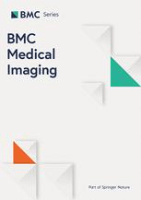
BMC MEDICAL IMAGING
Empowering Researchers and Clinicians in Medical Imaging.BMC Medical Imaging is a premier open-access journal dedicated to advancing the field of radiology, nuclear medicine, and imaging technologies. Published by BMC in the United Kingdom, this journal serves as a vital resource for researchers, clinicians, and students, fostering a collaborative environment for sharing innovative findings and methodologies in medical imaging. With a commendable impact factor and an impressive Scopus ranking within the top 35% of its category, BMC Medical Imaging provides a platform for high-quality research to be disseminated widely and freely since its inception in 2001. The journal aims to cover a diverse array of topics, from advanced imaging techniques to their clinical applications, enhancing the understanding and effectiveness of diagnostic practices. By contributing to the body of knowledge and facilitating open access to research, BMC Medical Imaging plays a pivotal role in shaping the future of medical imaging and improving patient care.

INTERNATIONAL JOURNAL OF CARDIOVASCULAR IMAGING
Transforming Imaging Techniques for Better Patient OutcomesINTERNATIONAL JOURNAL OF CARDIOVASCULAR IMAGING, published by Springer, is a prestigious platform dedicated to the interdisciplinary field of cardiovascular medicine and imaging. With an ISSN of 1569-5794 and E-ISSN 1875-8312, the journal is recognized in both Cardiology and Cardiovascular Medicine (Rank #154/387, Q2 Category) and Radiology, Nuclear Medicine and Imaging (Rank #137/333, Q2 Category) disciplines, reflecting its significant impact within the scientific community. Established in 1988 and continuing to the present, it provides a rigorous forum for cutting-edge research, reviews, and clinical insights that are essential for advancing knowledge in cardiovascular diagnostics and therapeutic imaging. The journal's dual access options cater to both traditional and open-access readership, ensuring wide dissemination of its findings. In an era where cardiovascular diseases pose a significant public health challenge, the INTERNATIONAL JOURNAL OF CARDIOVASCULAR IMAGING stands out as an essential resource for researchers, healthcare professionals, and scholars aiming to innovate and improve patient outcomes through imaging technology.
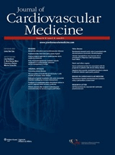
Journal of Cardiovascular Medicine
Connecting Research and Practice for Heart HealthWelcome to the Journal of Cardiovascular Medicine, a leading platform for the dissemination of high-quality research in the field of cardiology and cardiovascular medicine. Published by Lippincott Williams & Wilkins, this esteemed journal boasts an ISSN of 1558-2027 and an E-ISSN of 1558-2035, reflecting its commitment to accessible and innovative cardiovascular research. With a significant impact factor and ranked Q2 in both Cardiology and Cardiovascular Medicine as well as in Medicine (Miscellaneous) for 2023, the journal is recognized for its contributions to advancing knowledge and practice in this critical area of health. The journal disseminates original research, reviews, and clinical studies, aimed at clinicians, researchers, and healthcare professionals who are dedicated to improving cardiovascular health outcomes. With a continuous commitment to evolving research from 2006 to 2024, the journal is an essential resource for those looking to stay at the forefront of the latest discoveries and methodologies in cardiovascular medicine.

REVISTA ESPANOLA DE CARDIOLOGIA
Pioneering Research for a Healthier HeartREVISTA ESPANOLA DE CARDIOLOGIA is a premier journal dedicated to the dynamic field of cardiology, published by EDICIONES DOYMA S A in Barcelona, Spain. With an impressive Q1 status in the Medicine (miscellaneous) category for 2023, this journal is recognized for its significant contributions to cardiovascular research, evidenced by its rank of #61 out of 387 in the Scopus database, placing it within the top 16% of journals in its field. Covering a broad range of topics within cardiology, the journal aims to disseminate high-quality research, clinical studies, and educational content, fostering knowledge sharing among researchers, clinicians, and students alike. While it does not currently offer open access, the journal maintains a commitment to advancing cardiovascular health through rigorous peer-reviewed articles. With a publication history that spans from 2013 to 2024, REVISTA ESPANOLA DE CARDIOLOGIA is an essential resource for those seeking to stay at the forefront of cardiology advancements and practices.